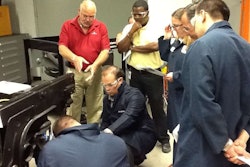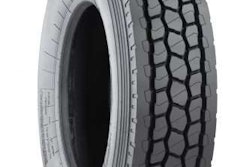The following comes from the January 2017 issue of Truck Parts & Service. To read a digital version of the magazine, please click the image below.

Running a profitable business requires a commitment to strategic planning. And for businesses tasked with a big decision, there are few analytical tools more valuable than a SWOT analysis.
SWOT, which stands for Strengths, Weaknesses, Opportunities and Threats, is an analytical tool that creates awareness around the internal and external factors that influence a company’s productivity and performance.
Existing businesses can use a SWOT analysis at any time to assess a company’s progress related to its goals.
For example, if a distributor is looking to improve its customer service results as part of its short-term business goal process, it could look at all the areas in which they’ve been successful, and of course, the areas that are lacking.
New businesses can use a SWOT analysis as a part of their planning process as well. For example, when developing a marketing plan for a new facility, you can look at all the items that are available, see who your competitors are and who they are targeting and see what options best suit the business.
Generally, owners, managers and various personnel groupings take place in the SWOT process so that varying opinions can be generated. The SWOT process is very much a “thinking game” where ideas are bounced around among a diverse group of peers.
A successful SWOT analysis focuses equally on each element of the acronym, and allows a business to identify all forces that influence their strategies, actions or initiatives.
Managers and executive staff who are able to provide input on these positive and negative elements ensure a SWOT analysis effectively examines all aspects of an operation.
How to build a SWOT analysis
Drafting a SWOT analysis typically starts with a table split into four columns where you can catalog the traits of your business.
Strengths and weaknesses won’t typically match listed opportunities and threats, though they should correlate somewhat since they’re tied together in some way.
The first two letters in the acronym, S (strengths) and W (weaknesses), refer to internal factors, which means the resources and experience available at that time. According to business planning software, LivePlan, examples of areas typically considered include:
- Financial resources, such as funding, sources of income and investment opportunities
- Physical resources, such as your company’s location, facilities and equipment
- Human resources, such as employees and target audiences
- Access to natural resources, trademarks, patents and copyrights
- Current processes, such as employee programs and software systems
LivePlan says external forces influence and affect every company. Whether or not these factors are connected directly or indirectly to an opportunity or threat, business owners should take note of and document each one. This is the O (opportunities) and T (threats) of the analysis.
LivePlan says external factors typically reference things that a distributor or dealership does not control, such as:
- Market trends, like new products and technology or shifts in audience needs
- Economic trends, such as local, national and international financial trends
- Relationships with suppliers and partners
- Political, environmental and economic regulations
Once you’ve finished your analysis, it’s time to determine what you can do based on the results.
Linda Pophal, owner and CEO of Strategic Communications consulting firm, says one common approach after completing a SWOT analysis is building a business plan that focuses on leveraging discovered strengths and opportunities to overcome weaknesses and threats.
“This is actually the area of strategy development where organizations have an opportunity to be most creative and where innovative ideas can emerge, but only if the analysis has been appropriately prepared in the first place,” Pophal says.
Ian Johnston, vice president of operations and marketing for Harman HVS, says his company does a SWOT analysis each year around November or December when the market slows.
“We look at the past year and the upcoming year and see how things fared and what we can do to improve,” Johnston says. “We look at whether new equipment or processes are needed and the new product lines and how they fit. We take a good look at every aspect of the business and see what things are working and what areas we need to improve.”
Johnston says the SWOT analysis gives the company a better understanding of changes needed in their short and longterm business planning process.
“There are areas where we can be flexible and some where we can’t. The SWOT helps us in planning our goals.”










